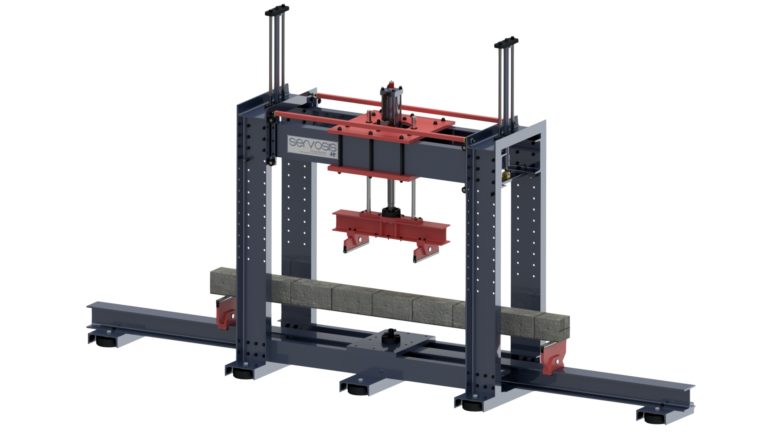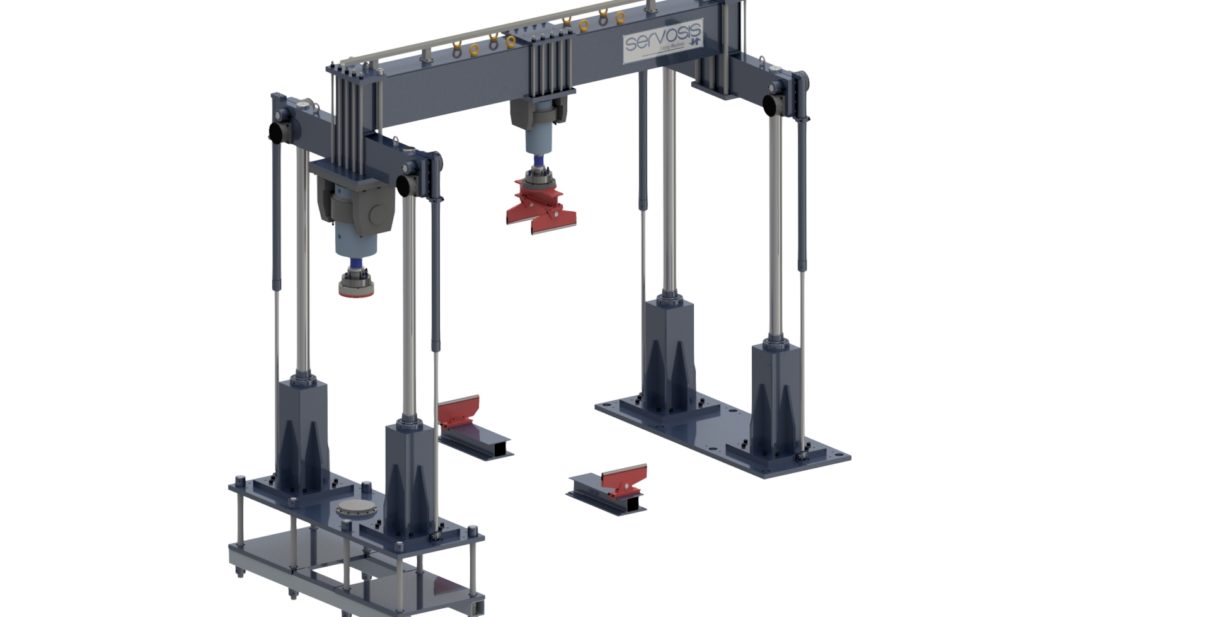- 5 de May de 2023
- by Adriana Rodriguez
- News
In the engineering industry, high-capacity testing is essential for the development of high-strength structures and components. Gantries are an essential tool in this process, as they allow both static and dynamic testing.
Static Gantries
Static gantries are structures that are used to apply loads on a structure or component in a constant manner, at low frequencies or velocities. They are ideal for strength testing, since they allow measuring the amount of force that a structure or component can withstand before failure. These gantries are capable of applying loads in a linear or cyclic fashion, making them ideal for high capacity testing.
At Servosis, we manufacture static gantries to perform strength tests on high-strength structures and components, such as beams, columns and steel structures.
Dynamic Gantries
Dynamic gantries, on the other hand, are structures that are used to apply repetitive loads with high frequencies, up to 50 Hz, on a structure or component in one or more directions. These gantries are ideal for fatigue testing, as they allow simulating the amount of stress that a structure or component would experience during its lifetime. Fatigue testing is essential to ensure that the tested products can withstand repetitive load cycles without failure.
We use these dynamic gantries to perform fatigue tests on a variety of products, such as automotive parts, packaging, concrete structures, fiber, metallic structures…
In recent years, Servosis has supplied this type of gantries to numerous Universities, winning numerous public tenders. This fact shows the quality of the product, its versatility and its ability to adapt to the requirements of each case.
Below, we present our ME 406 gantry and its main features;
Testing of structures.
ME 406 gantry
ME 406 is our gantry model for load tests on large structures, such as beams, columns, steel structures, bridges and other similar components.
One of the fundamental differences of our 406 series with respect to other designs is that our proposal is based on the use of columns and load bridges with automatic hydraulic displacement and locking system and not on the use of beams. This design greatly simplifies test preparation operations and makes the use of auxiliary elements such as bridge cranes unnecessary.
The anchoring system of the large portal frames to the available surface is adapted in the design phase, in general a slab should be available with holes drilled at fixed distances.
In this case, the holes in the slab are used, and the gantry is connected to the floor by means of a threaded bar system.
It is also very common to use the lower area of the slab for the installation of the hydraulic power unit, and some of the free holes for the hydraulic conduits. In this way, a clean system is achieved where there are no impediments for the assembly of the tests.

Features of the ME 406 gantry
This model has a number of features that make it ideal for load testing large structures. These features include:
Specific design for large specimens, the design is adapted in each case to the customer’s specifications.
Hydraulic drive:
- Double acting hydraulic servo actuator installed on the upper loading bridge.
- Possibility of installing more than one actuator and synchronized operation.
- Actuator control by servovalve.
- Automatic vertical positioning of the loading crossbeam.
Force parameters
Maximum load capacity – Models from 50kN to 2500kN available.
Transducer for force measurement – Load cell, Class 1 according to ISO 7500.
Displacement parameters
Transducer for displacement measurement – Integrated in the servo actuator body. SSI type digital output signal.
ME 406 gantry applications
The ME 406 gantry is used in a wide variety of applications in the construction and engineering industry, such as the evaluation of strength and load capacity in:
- Load tests on buildings, such as walls, masonry, concrete slabs, etc.
- Load tests on steel structures, e.g. bridge trusses, slipways, etc.
- Load tests on machinery components, e.g. cross members, seats, wheels, crankshafts, automotive and railway parts, etc.
- Furniture testing.
The Servosis ME 406 gantry is an essential tool for testing large structures. With its load capacity of up to 250 tons, its automatic load control system and its high accuracy, the ME 406 gantry is ideal for a wide variety of applications. Its modular design and integrated safety system make it a versatile and safe tool for testing in different locations.

Accessories for structural testing
In addition to the gantries themselves to carry out these tests, we have a wide variety of accessories, all of which can be custom-made;
- Grips.
- Extensometry.
- Videoextensometry.
- Tools for bending.
- Compression.
- Pull out.
- Climatic chambers.
- Ovens.
In conclusion, heavy-duty testing gantries are essential to ensure that products are safe, reliable and durable. Static gantries are used for strength testing, while dynamic gantries are used for fatigue testing.
For each project, Servosis studies and develops a specific tailor-made solution, providing our customers with the right product.
If you want more information about structural testing, please contact us!







